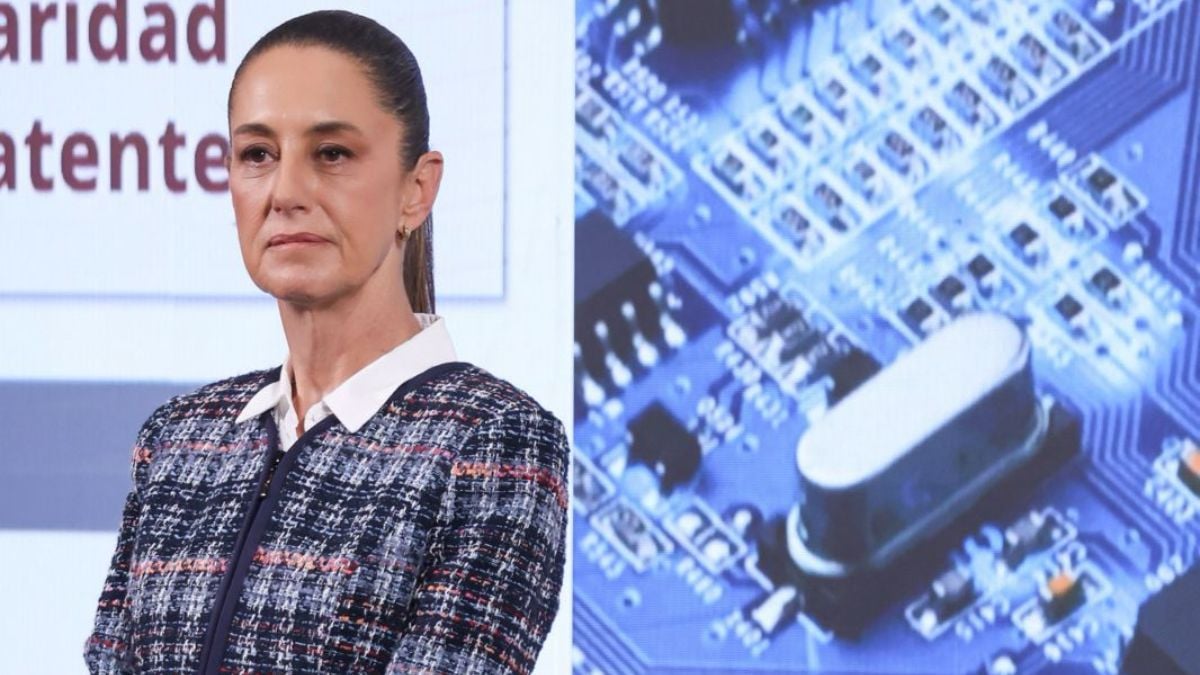
The “Kutsari” project is an initiative by the Mexican government for the development of semiconductors in the country. This program was announced by President Claudia Sheinbaum Pardo during the morning press conference on February 6, with the goal of establishing Mexico as a key player in the design and manufacturing of semiconductors, an essential industry for technological advancement and the global economy.
What are semiconductors and what are they used for?
Semiconductors are materials with electrical properties that fall between conductors and insulators. They are essential for the operation of electronic devices such as computers, mobile phones, televisions, automobiles, and home appliances.
These materials enable the manufacturing of integrated circuits or “chips”, which are the heart of any modern technological device. In the case of Kutsari, the initiative aims to develop new design and manufacturing technologies to strengthen Mexico’s semiconductor industry.
What does the Kutsari project consist of?
Kutsari is a program promoted by the Secretariat of Sciences, Humanities, Technology, and Innovation, created by the government of Claudia Sheinbaum. Its main objective is the establishment of the National Semiconductor Design Center, a dedicated space for research and chip development in the country.
The initiative is based on three major pillars:
- Strengthening semiconductor design through the participation of public higher education institutions.
- Amending the Patent Registration Law to accelerate innovation and commercialization processes for technologies developed in Mexico.
- Implementing design centers in Puebla, Jalisco, and Sonora to expand semiconductor development across different regions of the country.
Why is Mexico investing in semiconductor development?
Mexico has identified semiconductors as a strategic sector for economic growth and technological sovereignty. Currently, the country imports more than $20 billion worth of integrated circuits annually, primarily for the automotive, medical device, home appliance, and information technology industries.
The Kutsari initiative aims to reduce this dependency and strengthen Mexico’s participation in the global semiconductor supply chain. President Sheinbaum stated that there is already extensive research in Mexico, and the objective now is to coordinate efforts to turn that research into marketable, high-value products.
READ ALSO. How Donald Trump’s tariffs will affect consumers
What does Kutsari mean?
The name comes from the Purépecha language and means “sand,” a key term in this industry since semiconductors are made from silicon, an element found in sand.
Who is involved in the development of the Kutsari project?
The development of the Kutsari project is led by top-tier academic institutions and research centers, including:
- INAOE (National Institute of Astrophysics, Optics, and Electronics)
- CINVESTAV (Center for Research and Advanced Studies)
- UNAM (National Autonomous University of Mexico)
- IPN (National Polytechnic Institute)
These institutions will contribute knowledge and technology to semiconductor design, aiming to generate innovations that can be patented and commercialized both nationally and internationally.
What are the benefits of Kutsari for the Mexican economy?
The development of semiconductors in Mexico brings multiple economic and technological benefits, including:
- Reduction of imports: Producing chips domestically will decrease dependence on foreign markets.
- Job creation: The semiconductor industry is highly specialized and could generate thousands of jobs in technology and engineering.
- Acceleration of innovation: With a favorable legal framework, research and development of new technologies will be encouraged.
- Boost to education and research: Universities and research centers will be able to participate in high-impact technological projects.
What is the future of the Kutsari project?
The Mexican government has established a medium- and long-term plan for consolidating the semiconductor industry. The initial phase focuses on chip design, but the goal is to move towards large-scale manufacturing in the future.
According to Secretary of Sciences, Humanities, Technology, and Innovation, Rosaura Ruiz Gutiérrez, the country has 40 years of experience in semiconductor manufacturing, so the challenge now is to innovate and scale up production.
Kutsari is also part of the Master Plan for the Development of the Semiconductor Industry in Mexico 2024-2030, which aims to double exports and employment in the sector. Over the next few years, foreign investments are expected to be attracted, and a globally competitive technological ecosystem is set to be developed.









